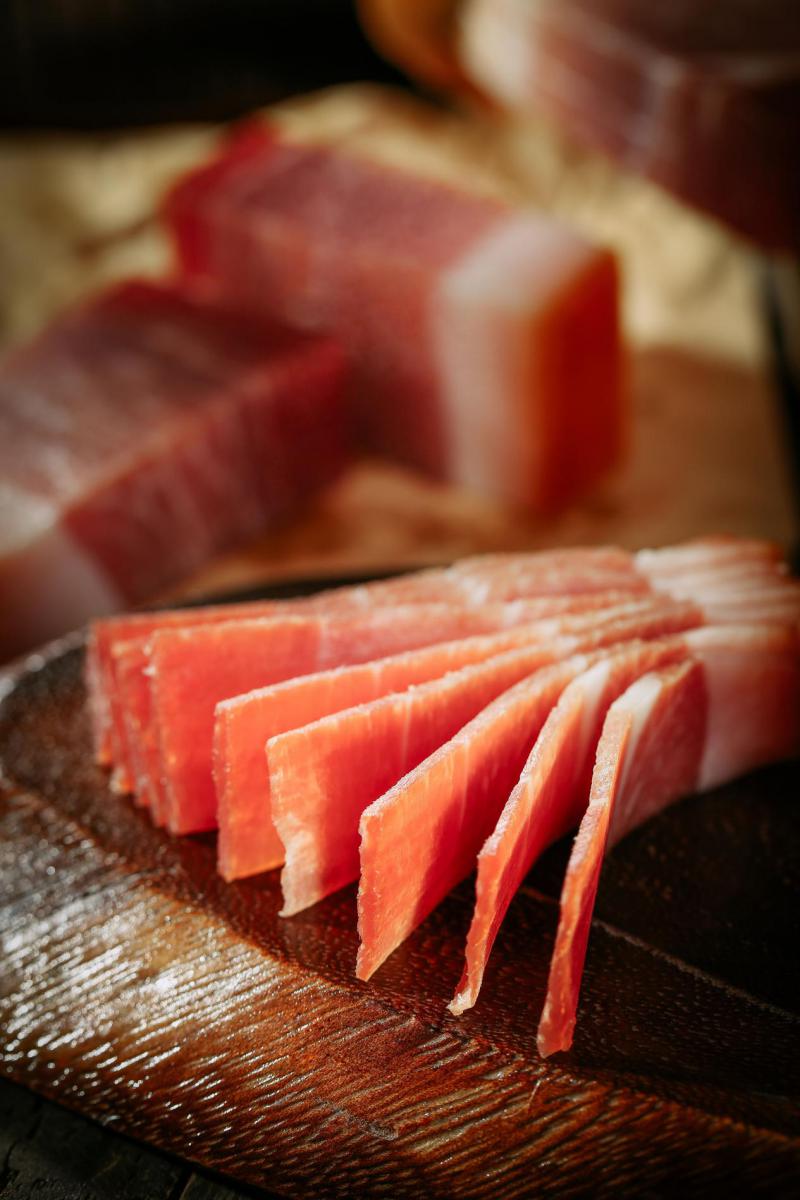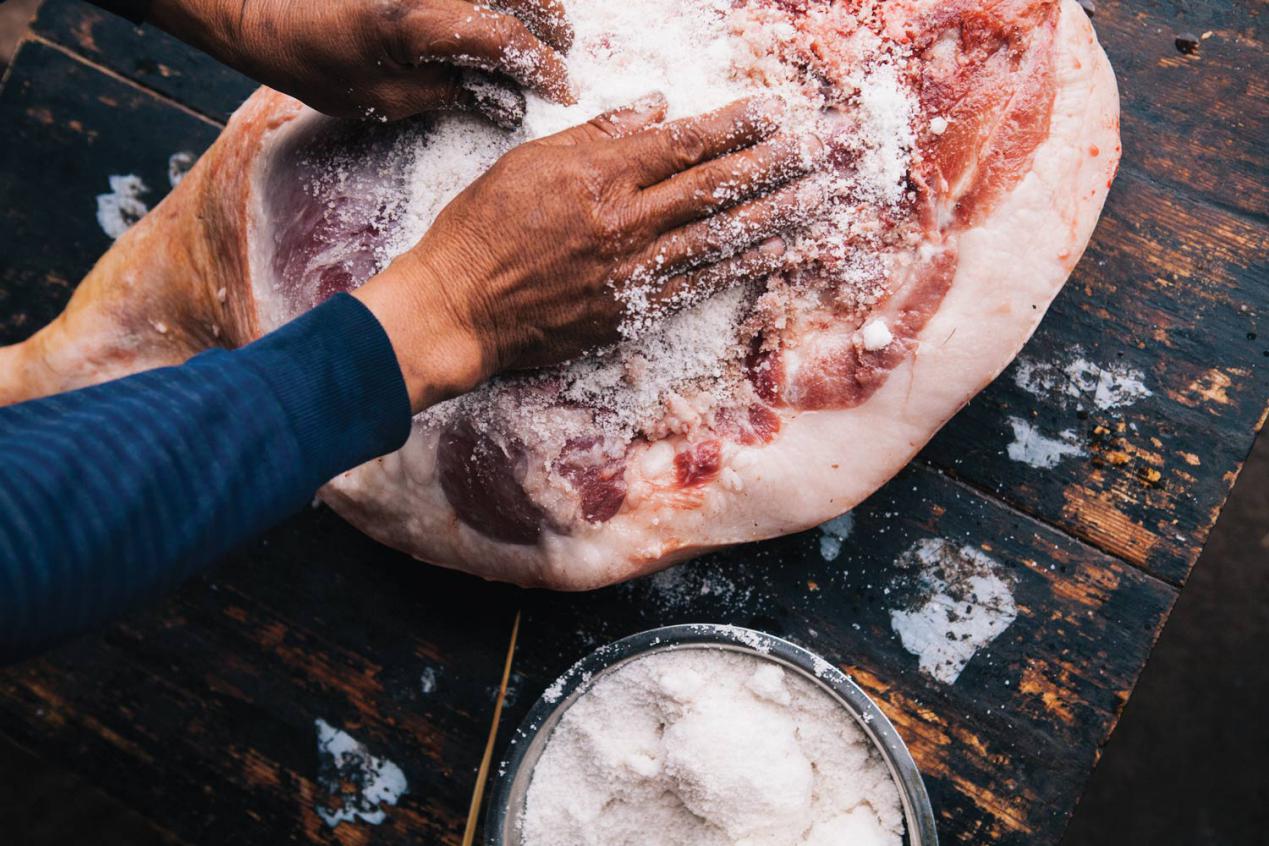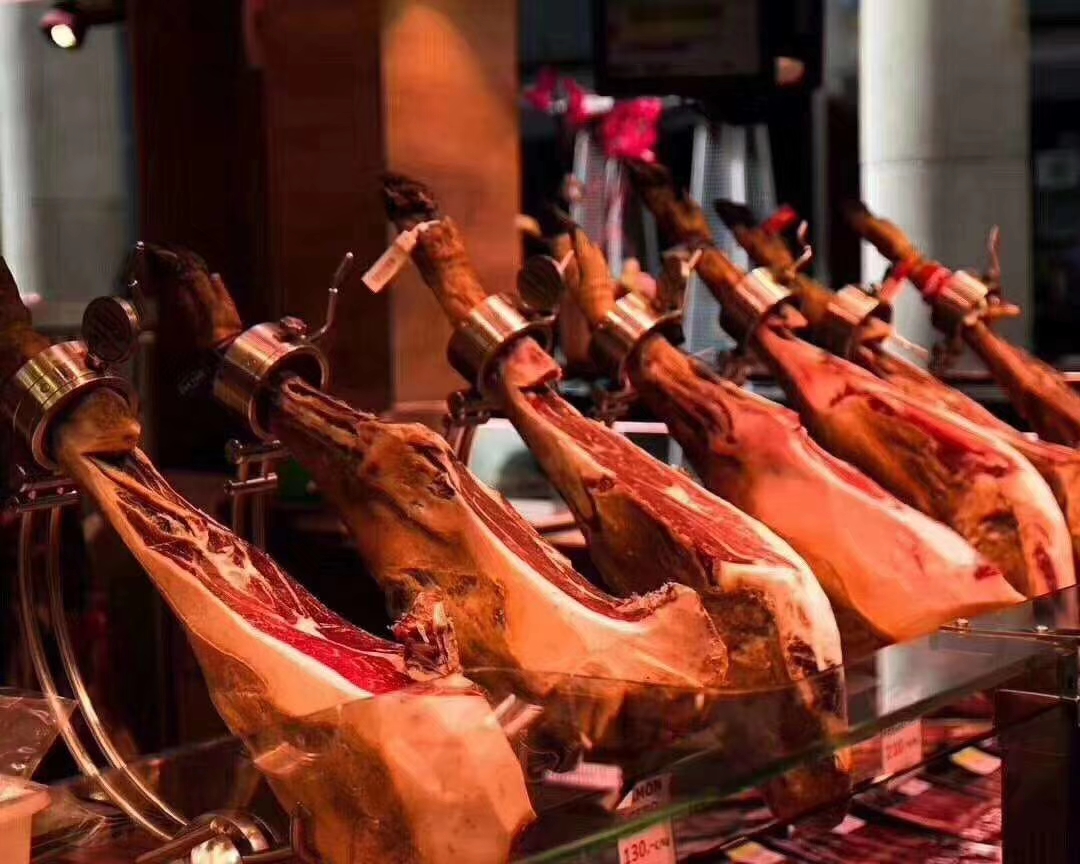

(By Mo Tingting)When Marco Polo arrived in China in the 13th century, he was impressed by Chinese culture and customs during his travels. It was at that time that he visited Jinhua, a city in eastern Zhejiang Province. When the Chinese talk about Jinhua, it is Jinhua ham that occurs to their minds. Jinhua ham is a versatile and prized ingredient in Chinese cooking because of its intense umami flavor. Marco Polo allegedly brought ham-making techniques from Jinhua to Europe, and many of today’s processing technologies for dry-cured hams are evolved from the techniques in this modest Chinese city. Now let’s take a look at the origins of this traditional Chinese ingredient, and how it made its way across the globe.
A gem of Chinese cuisine culture
China has a long, glorious history and a splendid dietary culture. With the Spring Festival is approaching, the rhythms of salting and feasting are embedded in the lunar calendar and the determination to hold onto the season’s best offerings. There are several dry-cured hams produced in China and the top three hams are Jinhua ham, Rugao ham and Xuanwei ham. In the Supplementary of Materia Medica, doctor Chen Cangqi during the Kaiyuan Period (713-741) claimed ham from Jinhua was the best one.

Jinhua is located in the hilly basin of central Zhejiang Province. As a gem of Chinese cuisine culture acknowledged by the world, Jinhua ham is a dry-cured meat product elaborately produced with raw hind legs of pig based on traditional processing methods. If you think dry-cured ham is a Spanish invention, you’d be way off the mark. Long before Italians produced prosciutto and the Spanish made their jamon, Chinese were making their dry-cured ham in Jinhua in the Tang Dynasty (618-907). It has a great impact on local people’s customs as well as the development of the meat industry in the world.
According to the folk legends prevailing in Zhejiang Province, in ancient times, hungry people found pigs buried in sea salt and sand after seawater floods edible, and invented the meat preserving method of salting. This might be the origin of ham processing. Zongze, a hero in the war against Jurchen in the Song Dynasty (960-1279), offered the emperor Jinhua ham as a tribute. Loved by the emperor, the ham was named “Huo Tui” for its red color.
The quality of ham is judged based on color, aroma, taste and shape. The texture of good quality Jinhua ham presents clearly the red lean meat and the white fat. There’s nothing better to inform you of food quality than your tongue as long as your palate is in good working order. There’s nothing quite like it: dense, chewy and bursting with layers of subtle flavors behind the first hit of sweetness. The cooked lean meat is salty with a slightly sweet flavor, whilst the fat is oily without greasy.
Jinhua ham, highly nutritious, is rich in protein, fat, vitamins and minerals which are absorbable by the human body. In addition, ancient Chinese found that Jinhua ham could display restorative and curative effects against human illness such as choke, abdomen discomfort, fatigue and dysentery. This has been recorded in detail in many famous Chinese medicine works, although the mechanism is not clear.
Early in the Qing Dynasty (1636-1912), Jinhua ham was exported to Japan and Southeast Asia. In the early 20th century, Jinhua’s artisanal hams captured top prizes at international expositions in Leipzig in 1905, Panama and San Francisco in 1915, and Honolulu in 1935.
Tips:
Jinhua ham: With an appealing bamboo leaf-like appearance, thin and golden yellow skin, bright red meat and captivating flavor, it is well-known for its four superlatives in “color, aroma, taste and appearance”. Zhang Dai, a poet in the Ming Dynasty (1368-1644) spoke highly of the color of Jinhua Ham: “The lean part looks like coral while the fat is as greasy as amber”.
Technology passed down from generation to generation
Jinhua is surrounded by mountains and rivers on three sides. In addition, its four seasons are distinct, and the dry and wet alternation provides unique conditions for the production of Jinhua ham.

Known as “panda pig” for its black and white patterns, “Liangtouwu” pig for making Jinhua ham is prized for its naturally small size and high-fat content. Although it takes a long time to breed them, panda pigs take in all the nutrients and are very flavorful. Traditionally, only hind legs from the Jinhua panda pig or its cross offspring could be used for producing Jinhua ham. The exposed part of bones, as well as the fat, tendon, and muscle membrane on the meat surface of selected legs, are removed, and the hams are then trimmed into a shape like a bamboo leaf.
For Jinhua ham, 36 procedures are necessary, including dressing, trimming, salting, washing, drying, fermenting and finally, smelling. Salting is a critical stage in Jinhua ham’s processing, since inappropriate salting may cause spoilage. A good Jinhua ham master will experientially regulate salt dosage according to the ham’s weight, muscle thickness, weather conditions, and ham appearance during salting. Next comes the fermentation process, where the ham is stored in a cool dark place for months for the ham to give off its distinct aroma and flavour. The final step, known as “smelling”, will insert a bamboo stick or sharp bone into the meat. Once the stick is removed, the aroma is judged to test the quality of the ham. The processing technology and culture of Jinhua ham are successfully passed down by its masters and apprentices from generation to generation. In the past, Jinhua ham masters were highly respected by local people.
“Jinhua ham is complicated to cook with,” said Yin Bingzhu, owner of a family-run factory Shengyulong in Jinhua. “Jinhua ham has an extremely dense flavor, and it’s not the main food but more of a flavour enhancer. People in Guangdong Province often use it to make soup.”

In the past, the Chinese people only ate Jinhua ham on special occasions. In Jinhua, there’s ham in the Zongzi (traditional Chinese rice-pudding) eaten in the Dragon Boat Festival, the mooncakes during Mid-Autumn Festival, and the seasonal broths. Lu Xun, a native of Shaoxing, once asked someone to take Jinhua ham as a solemn gift to Yan’an in his later years and gave it to leaders of the Red Army Mao Zedong and Zhou Enlai, expressing his support for the Chinese revolution. Up until now, the custom of presenting Jinhua ham as a gift to relatives and friends still prevails in Jinhua.
Tips:
Jinhua Ham Museum: No. 1,000 Jinfan Street, Wucheng District, Jinhua City, Zhejiang Province, China.
■ Storage: Traditionally, Jinhua ham could be stored for at least 5 years under natural conditions, and hams stored for 2 to 3 years are the best in flavor quality.
Source: China-ASEAN Panorama
桂ICP备14000177号 Copyright@2006-2013 Guangxi China-ASEAN Panorama Magazine Agency Co., Ltd. All Rights Reserved